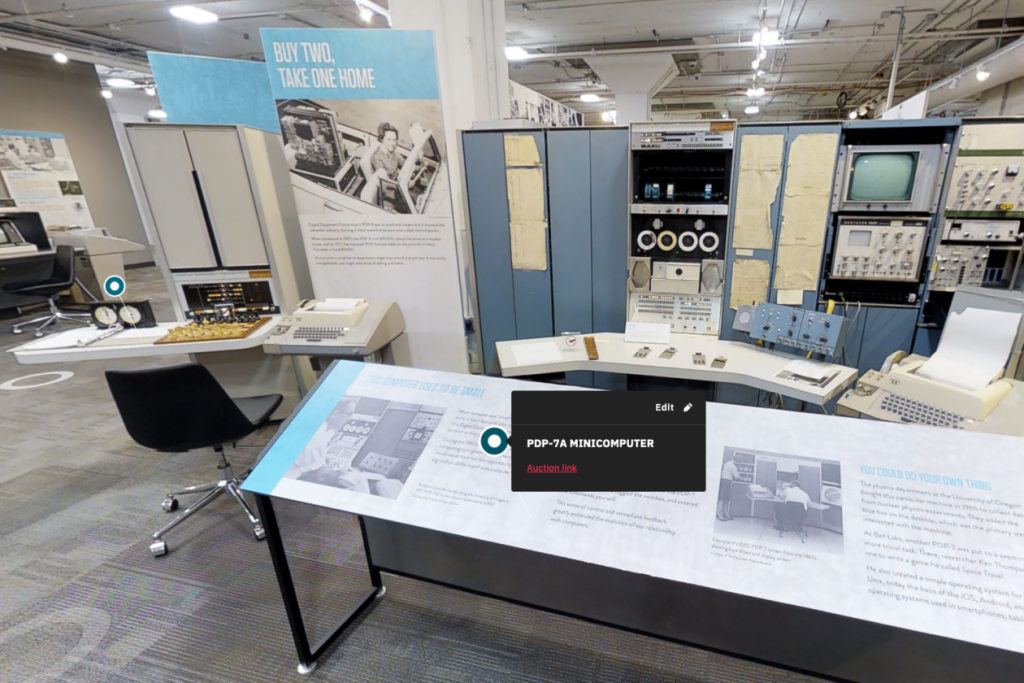Paolo Tosolini, a tech veteran and founder of Tosolini Productions, originally did a 3D photo scan of the Living Computers: Museum + Labs in Seattle back in 2015. He returned in 2017 to do a more detailed scan of the first and second floors of the institution located in Seattle’s SoDo neighborhood. However, with the museum closing for good following the June announcement, Tosolini’s virtual tour could serve as a way to keep the memories of the museum alive for its fans. The tour has been updated with links to the Christie’s auction of some artifacts for those who might want to own one of Paul Allen’s old machines.
The virtual tour contains interactive “hot spots” to 16 items that are up for auction, including mainframes, microcomputers, minicomputers, early Microsoft software packages, an Apple Newton Messagepad, a Microsoft Surface tabletop, and more. Users can navigate through the museum and view former exhibits as well as explore areas that were originally off-limits, like behind mainframes. Tosolini acknowledges that not all auction items are tagged in the tour as some may have been in storage and not on display when he did his scans. Regardless, he provides an easy way for users to access the auction site from the museum tour.
Although Tosolini had the opportunity to potentially bid on items from the auction, such as the Apple-1, he reflects on the decision of whether to invest in these historic artifacts or other opportunities such as buying a new apartment or investing in the stock market. Tosolini also has a separate tour of the first floor of Living Computers, which focused on modern technology and interactive displays. Both tours can be viewed in virtual reality through headsets such as the Meta Quest, providing an immersive experience for users.
Tosolini’s work on the virtual tour of Living Computers reflects his belief in using technology for historic preservation. He has also scanned airplanes for Seattle’s Museum of Flight and captured shoreline views from a boat in Lake Washington. Additionally, he experimented with combining virtual tours with augmented reality views of items to enhance the museum experience. Despite the closure of Living Computers, Tosolini continues to explore new ways that technology can connect people with history and help museums preserve their legacy.
Tosolini acknowledges the emotional attachment that he and others may have had to the Living Computers museum and the old machines it housed. He recognizes the impact of his work in enabling technology to aid in preserving history for future generations. With advancements in virtual tour technology and the use of 3D scans taken directly from smartphones in a mobile app for the Museum of Flight, museums are able to engage with visitors in exciting and innovative ways. Tosolini believes that this technology is opening doors for museums to connect with people and preserve history in a more impactful and accessible manner.












